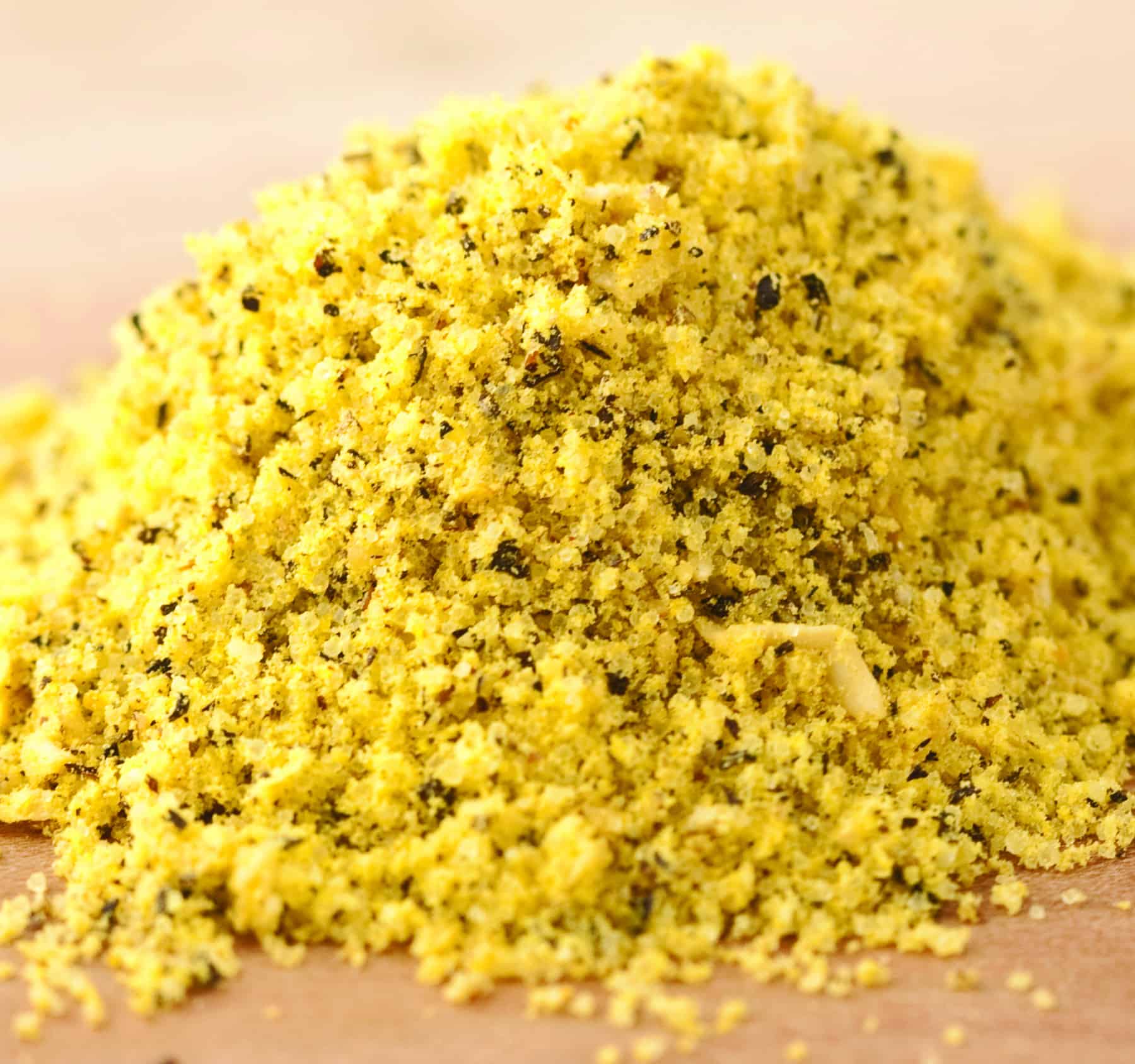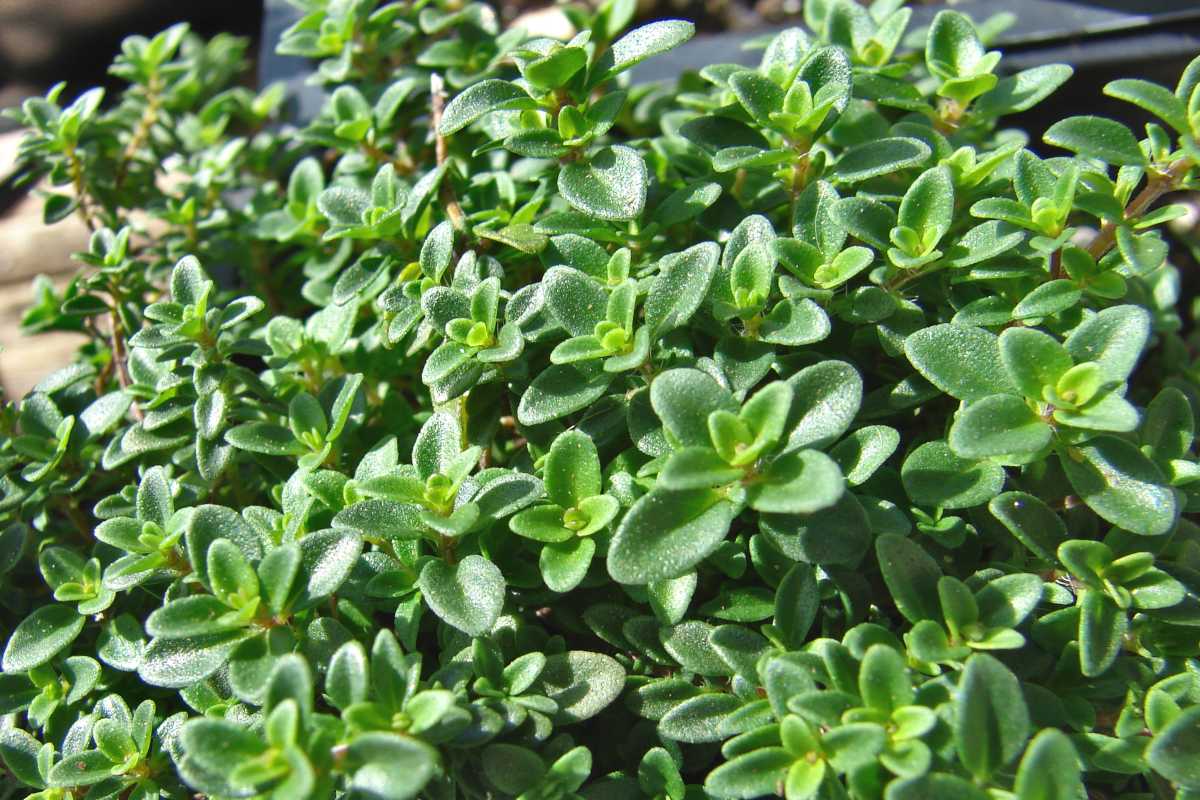Za’atar is essential to Lebanese cuisine, but sometimes you might still need to get it on hand.
You may not feel like purchasing it at times. Not to worry—this article includes the best substitutes for za’atar!
Now, let’s talk a little about za’atar, one of the most important ingredients in Arab cuisine. It combines spices like sumac, thyme, and sesame seeds.
Furthermore, the spice mixture is sour, making it the perfect addition to salads and soups.
But what are some other options if you can’t find za’atar? Here are some of the best substitutes for za’atar to make your dishes pop!
So, if you don’t want to miss out, try one of these best substitutes for za’atar! Our list will help you keep your dishes authentic and flavorful, so you don’t have to make any substitutions!
1. Lemon Pepper

Lemon pepper is a spice mix that combines ground black pepper, lemon peel, and salt.
It is often used as a topping for fish or chicken, making it one of the best substitutes for za’atar.
It has the same flavor but no added spices like oregano and thyme. As a result, you have more control over what flavors you want in your dish.
Meanwhile, the absence of sesame seeds should also be considered.
Sesame seeds can be added if you have them or excluded from a dish with earthy flavors, such as barbecued meat if you don’t.
Instead of actual lemon, most commercially available kinds of lemon pepper employ shelf-stable citric acid.
This is useful for a quick flavor boost. But if you like a fruitier flavor similar to za’atar, you may make lemon zest and pepper mixture.
2. Lemon Thyme

Although lemon thyme is a common herb variation and doesn’t contain lemon, it has similar citrus aromas.
It is a serious contender for the title of finest za’atar alternative because it is convenient, reasonably priced, and widely available in supermarkets.
When your salad, meat, or stew has finished cooking, you may sprinkle the fresh variety immediately on top for a blast of freshness.
Moreover, there are several ways to substitute this spice if you can’t find it in stores or online.
One option is using the fresh leaves of lemon thyme, which have a similar flavor profile to za’atar with more citrusy notes.
If you’re looking for something spicy, try cumin and oregano instead.
3. Coriander
One of the best substitutes for za’atar is coriander. This spicy herb has a tangy, citrusy flavor and is commonly used in Indian, Thai, and Mexican cuisine.
Coriander leaves are long and pointed at the end, with a fresh-peppery aroma. Coriander seeds are small, round, and have a nutty flavor.
You can use either one to add an earthy spice to any dish. Although it has a completely different flavor, coriander has a similar appearance to white peppercorns.
It does a decent job of imitating all three of za’atar’s primary flavors—floral, lemony, and somewhat sweet. Besides, you can use it in a 1:1 ratio with za’atar because it is not a potent spice.
Unlike za’atar, coriander can be added to recipes as they are cooking. This distributes the taste more evenly throughout the dish. Of course, it tastes just as good when added afterward.
Before using coriander, finely grind it with a spice grinder or mortar and pestle. Fruits and vegetables with milder flavors pair well with it.
4. Shichimi Togarashi
Shichimi togarashi has a flavor akin to za’atar with a decidedly Japanese touch because it is mostly made of chili flakes, seaweed, and sesame seeds.
Its level of complexity is comparable to that of its Middle Eastern equivalent, even though some of the flavors it adds are slightly different.
Additionally, Shichimi togarashi pairs wonderfully with the umami flavors frequently found in Japanese cuisine.
Therefore, it is one of the best substitutes for za’atar when seasoning meat, fish, mushrooms, or other dishes with strong meaty flavors. Just be sure you’re ready for the extra spice it brings!
5. Mixed Herbs
Za’atar is a classic spice blend in Middle Eastern and Mediterranean cooking.
It comprises various herbs, including thyme, oregano, marjoram, savory, and sesame seeds.
Mixed herbs can be used as the best substitutes for za’atar in many recipes.
The most popular way to use mixed herbs is as a dry rub on meats before grilling or roasting them.
Use mixed herbs per pound of meat. When fresh herbs are called for, fresh herbs can also be substituted in place of za’atar by adding dried mixed herbs to the recipe.
Italian Seasoning
Italian seasonings are the best Substitutes For za’atar, as they have some of the same flavor profiles.
Italian seasoning doesn’t have to be used in Italian dishes; it can also be used in Middle Eastern and Turkish recipes.
It combines thyme, oregano, basil, marjoram, sage, and rosemary.
However, you can use fresh herbs if you want to avoid buying spices and save some money.
The next time you make hummus or babaganoush, add a few sprigs of thyme or oregano from your garden into the dish!
These herbs are very aromatic and add an earthy flavor that pops in those Middle Eastern meals.
6. Ground Sumac
Even though it’s only one of the three basic components of za’atar, ground sumac does more than the other two together. It substitutes for vinegar or lemon in any meal with its distinct, citrusy flavor.
Just be aware that it is potent and shouldn’t be used in amounts greater than a quarter teaspoon at once.
In addition, it is best to serve ground sumac with heartier or fatty meals. It can cut through the strong flavors, completing and accentuating the flavor.
Try combining it with some herbs, such as thyme or oregano, to balance it a bit.
Looking for the best Substitutes for za’atar?— Ground Sumac is one!
7. Lemon Zest
Lemon zest is a good substitute for ground sumac if you have none. Its flavor is comparable to za’atar’s, but it is fruitier and fresher. Therefore, it also replaces the herb blend in za’atar.
Equally important, the optimum moment to add lemon zest is right before serving, when the food is still hot enough to blend in without losing its taste.
Most recipes ask for a tablespoon or more, about the same amount as za’atar.
Besides, the benefit of utilizing lemon zest is that lemon juice can be added to it.
This will bring out more of its fruity flavor, which goes particularly well with meat and seafood.
This is one of the best substitutes for za’atar because it has a good citrus flavor and contributes to the dish’s tartness.
It’s worth noting that lemon zest can be used in various dishes, not just those with Middle Eastern flavors.
If you want to use it in an Indian dish, try using it with cumin, coriander, and garam masala.
Also, you can use this substitution in an Italian dish by adding garlic, parsley, and thyme.
8. Dukkah
The Egyptian spice mixture, dukkah, or duqqa and do’ah, includes almonds, sesame seeds, coriander, and cumin.
Its taste is notably different from that of za’atar, but it has the same region and one essential ingredient.
Still, when paired with other ingredients, it can be a terrific way to spice up a dish and make a tighter fit.
To balance the flavor, adding acidic and herbal components is the ideal approach to replace dukkah for za’atar.
Thyme or marjoram can add a lovely herbaceous flavor, while lemon zest or sumac can brighten the flavor.
Specifically, Dukkah is a popular Egyptian spice and dip blend of herbs, spices, and nuts.
The traditional version uses hazelnuts and sesame seeds as primary ingredients, which gives this nut-based dip its signature flavor.
Dukkah can be served over bread, vegetables, or fish to add a little spice.








